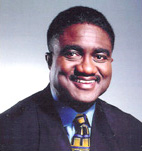 The death of Hadiya Pendleton, a 15-year-old honor student at King College Prep High School on Chicago's South Side is finally receiving the national attention that it deserves. An honor student and majorette in her school's marching band, Hadiya had recently participated in President Obama's inaugural parade in the nation's capital.
The death of Hadiya Pendleton, a 15-year-old honor student at King College Prep High School on Chicago's South Side is finally receiving the national attention that it deserves. An honor student and majorette in her school's marching band, Hadiya had recently participated in President Obama's inaugural parade in the nation's capital.
After leaving school on Jan. 29, Hadiya was shot and killed in a park after she and friends sought shelter under a canopy when it began raining. She was killed about a mile from Obama's Chicago home. Hadiya's father, Nathaniel Pendleton, summed up his loss this way: "They took the light of my life…She was destined for great things and you stripped that from her."
First Lady Michelle Obama, Secretary of Education Arne Duncan and presidential adviser Valerie Jarrett attended Hadiya's funeral on Saturday. Her mother, Cleopatra Cowley-Pendleton, was a guest of the Obamas at Tuesday's State of the Union address. The president is scheduled to visit Chicago on Friday where he will deliver a major address on gun violence that is certain to contain a mention of Hadiya. It's fitting that Obama return to his adopted home town to make his case against deadly violence.
According to statistics analyzed by the Chicago Reporter, more young people are killed in Chicago than any other city in the nation. More than 530 people under 21 years old have been killed since 2008 – most of them in Black and Brown neighborhoods – while hundreds of others have been injured. According to the newspaper, nearly 80 percent of youth homicides occur in 22 Black or Latino neighborhoods on the city's South, Southwest and West sides, even though those communities represent only one-third of Chicago's population."
Young people are not only the victims of gun violence – they are usually the ones who pull the trigger.
"From 2008 through 2012, nearly half of Chicago's 2,389 homicide victims were killed before their 25th birthday. In 2011, the most recent year for which the data were available, more than 56 percent of individuals who committed murder were also under 25. One-third of Chicago residents are under 25, according to 2011 Census estimates," the Chicago Reporter states. "And despite various police strategies and community efforts, things are getting worse. Last year, 243 people under 25 were killed in Chicago. That's an 11 percent increase over 2011 and a 26 percent jump from 2010."
Chicago homicides are not limited to the youth.
The Reporter also noted, "In 2012, not only did Chicago lead the nation in homicides, it witnessed nearly 100 more murders than New York City, even though the Big Apple has three times as many residents. And Chicago witnessed 215 more murders than Los Angeles – home to more than a million more people."
Because of highly-publicized mass murders – including shooting deaths at Sandy Hook Elementary in Newtown, Conn.; a movie theater in Aurora, Colorado; Fort Hood, Texas and Virginia Tech – much of the gun debate has centered on reducing or eliminating access to assault weapons and high-capacity magazines.
While those are laudable goals, some police chiefs have pointed out that handguns kill far more people than assault weapons.
In its latest report titled, "Black Homicide Victimization in the United States: An Analysis of 2010 Homicide Data," the Violence Policy Center reported: "For homicides in which the weapon used could be identified, 83 percent of black victims (5,073 out of 6,149) were shot and killed with guns. Of these, 72 percent (3,658 victims) were killed with handguns. There were 617 victims killed with knives or other cutting instruments, 219 victims killed by bodily force, and 162 victims killed by a blunt object."
Overall, Blacks are more than six times more likely to be homicide victims than Whites.
Citing FBI crime reports, the Violence Policy Center observed, "…In 2010 there were 6,469 black homicide victims in the United States. The homicide rate among black victims in the United States was 16.32 per 100,000. For that year, the overall national homicide rate was 4.42 per 100,000. For whites, the national homicide rate was 2.66 per 100,000."
In addition to the need to address handgun violence, President Obama, Congress and law enforcement officials should acknowledge that violence is a serious problem and more often than not, the victim knew or had a relationship with the person who killed them.
"For homicides in which the victim to offender relationship could be identified, 70 percent of black victims (2,146 out of 3,058) were murdered by someone they knew. Nine hundred twelve victims were killed by strangers," the Violence Policy Center report stated.
If this country is serious about curbing murders, it must focus on tragic deaths, such as the murder of Hadiya Pendleton and 20 young kids in Newtown, Conn. But it must also deal with handguns and the murder of people who have or have had a relationship with their killer. Otherwise, all the tough talk on reducing violence is empty rhetoric.
George E. Curry, former editor-in-chief of Emerge magazine, is editor-in-chief of the National Newspaper Publishers Association News Service (NNPA.) He is a keynote speaker, moderator, and media coach.
- Home
- News
- Opinion
- Entertainment
- Classified
- About Us
 MLK Breakfast
MLK Breakfast- Community
- Foundation
- Obituaries
- Donate
04-20-2024 4:28 am • PDX and SEA Weather
















































































































































































































































































































